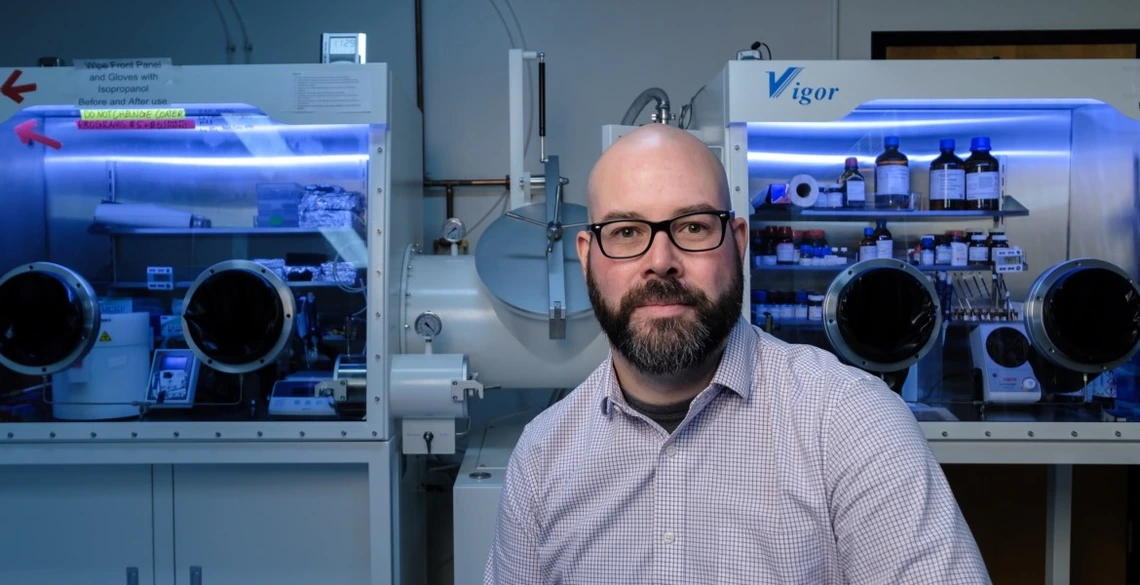Printz Uses CAREER Award to Advance Lightweight, Low-Cost Solar Technology

Solar energy is set to play a key role in the United States reaching its goal of a net zero emissions economy by 2050. In addition to conventional solar panels, which are made predominately of silicon and cadmium telluride, perovskite photovoltaics are likely to be part of the solution.
“Perovskite-based photovoltaics are exciting because they can be printed like newspapers and only require a small fraction of the material used in traditional photovoltaic technologies,” said chemical and environmental engineering assistant professor Adam Printz. “Less material usage reduces costs and waste, meaning that long-term, perovskite-based photovoltaics are an attractive replacement for current technologies.”
Perovskites are ultrathin – only a few hundred nanometers thick, or about around 1% the width of a human hair – and can be printed on flexible plastic substrates, which means they could be used in applications where portability and weight are key design factors including disaster relief, aviation, space exploration, and portable sensors for health care. However, perovskite photovoltaics aren’t yet commercially viable because they still exhibit chemical and mechanical instabilities, which cause them to degrade and stop working more quickly than other technologies. What exactly causes these instabilities, and how can they be mitigated to improve perovskite performance?
With a $500,000 CAREER Award from the National Science Foundation, Printz intends to figure it out. In tandem, he’s working to launch a video series and a renewable energy minor to educate a new generation of scientists.
